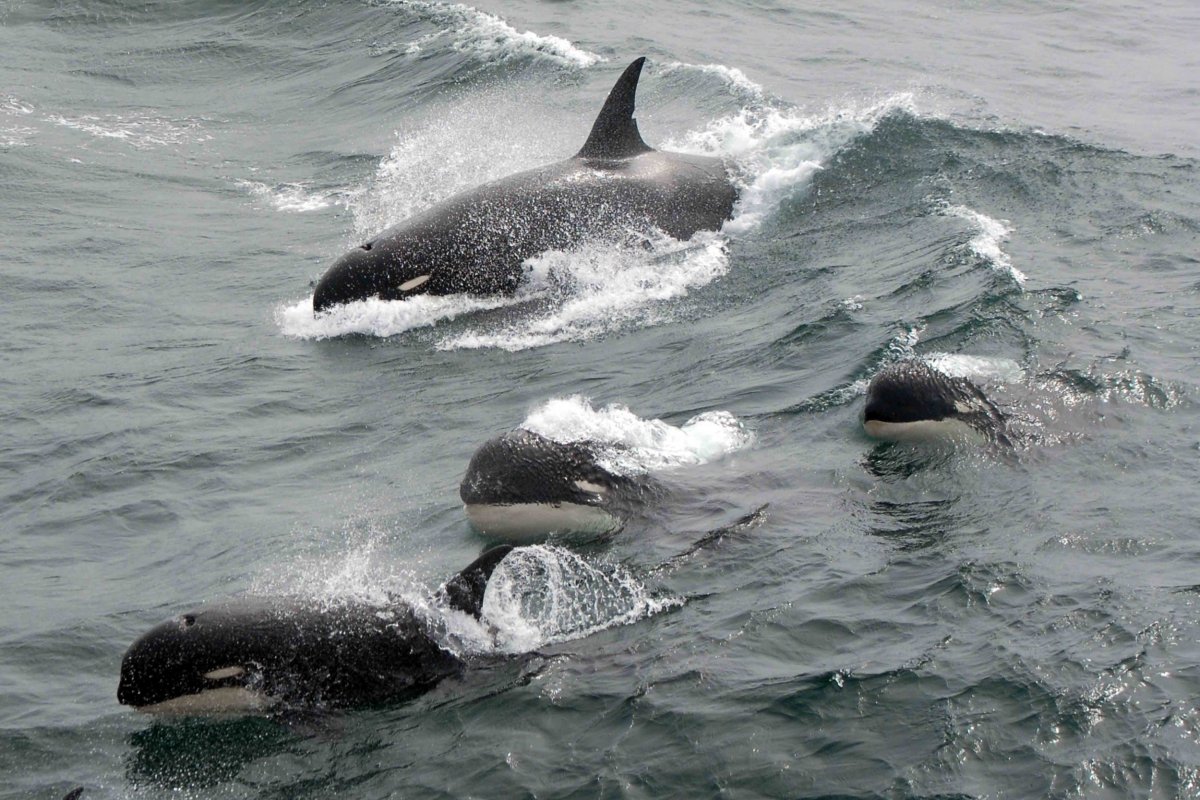A new species of killer whale, known as "Type D," may have been discovered off the coast of Chile by researchers working with the National Oceanic and Atmospheric Administration (NOAA.) Until now, this species was only known through stories told by fishermen, tourist photos and a single specimen that washed up on a beach over 60 years ago.
Unlike other killer whales, the new species has a more rounded, bulbous head, a narrower and pointed dorsal fin and white eye patches.
Types A, B and C killer whales have been known to science for decades. However, experts have long suspected there could be another species yet to be discovered as a result of anecdotal evidence.
In 1955, 17 creatures became stranded on the coast of New Zealand. They did not look like normal killer whales—but at the time researchers speculated they could just be a genetic anomaly.
However, in 2005, killer whale expert Bob Pitman, from the NOAA Fisheries' Southwest Fisheries Science Center, California, was shown photographs of unusual looking killer whales taken by fishermen working in the southern Indian Ocean. The images showed killer whales with rounded heads and tiny white eye patches—just like the stranding 50 years earlier.
In the years that followed, the booming Antarctic tourism industry meant more images of these strange killer whales emerged, and in 2010 Pitman published a scientific paper proposing the existence of Type D killer whales. But physical evidence was lacking, so Pitman and colleagues set out to find these creatures.
Based on the locations of sightings, combined with fishermen stories, they headed to waters off Cape Horn, Chile. After weeks of waiting, the team spotted a group of 30 whales that approached the vessel.
Rebecca Wellard, a killer whale vocalization expert, recorded the group's calls. An underwater camera also allowed them to get images of the whales, providing more details of their color pattern and body shape. Footage shows the whales swimming around the research vessel.
Finally, the team took skin samples using a crossbow dart. This will now be analyzed in the laboratory to find out if they are in fact a new species.
"We are very excited about the genetic analyses to come. Type D killer whales could be the largest undescribed animal left on the planet and a clear indication of how little we know about life in our oceans," Pitman said in a statement. "These samples hold the key to determining whether this form of killer whale represents a distinct species."

Uncommon Knowledge
Newsweek is committed to challenging conventional wisdom and finding connections in the search for common ground.
Newsweek is committed to challenging conventional wisdom and finding connections in the search for common ground.
About the writer
Hannah Osborne is Nesweek's Science Editor, based in London, UK. Hannah joined Newsweek in 2017 from IBTimes UK. She is ... Read more
To read how Newsweek uses AI as a newsroom tool, Click here.








